Abstract
Physicians' estimates of patients' anxiety, discomfort or pain, and activity limitation were compared with reports by their patients on the same dimensions. The data were collected as part of a series of quality assessment studies at a prepaid group practice serving 19,000 people in a Mid-Atlantic metropolitan area. Analysis of the data showed that physicians underestimated the three dimensions 35 percent of the time and that activity limitation was the dimension most often underestimated. Patients whose physicians correctly estimated their discomfort or pain were more likely to receive prescriptions than patients whose physicians underestimated their discomfort or pain. Patients whose physicians underestimated their activity limitation were most likely to report dissatisfaction with the treatment given. The results are consistent with a growing body of evidence suggesting that physicians who show concern about their patients and a desire to understand their problems establish better therapeutic relationships.
Full text
PDF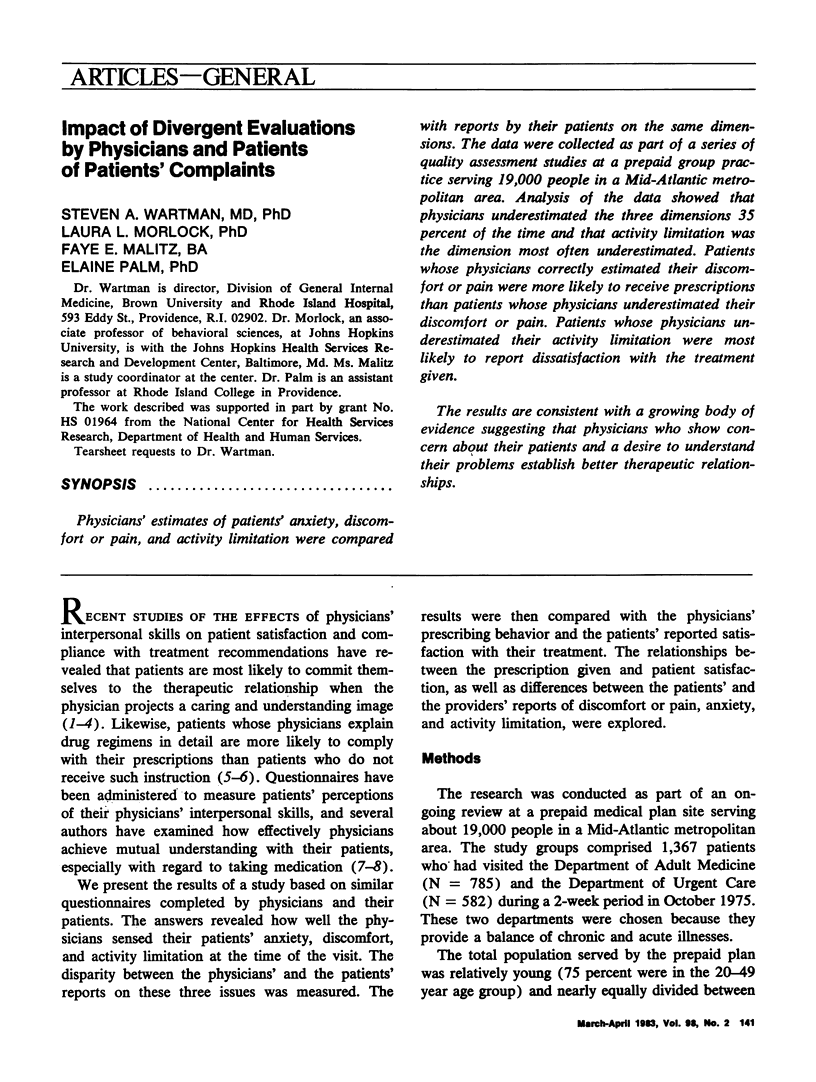
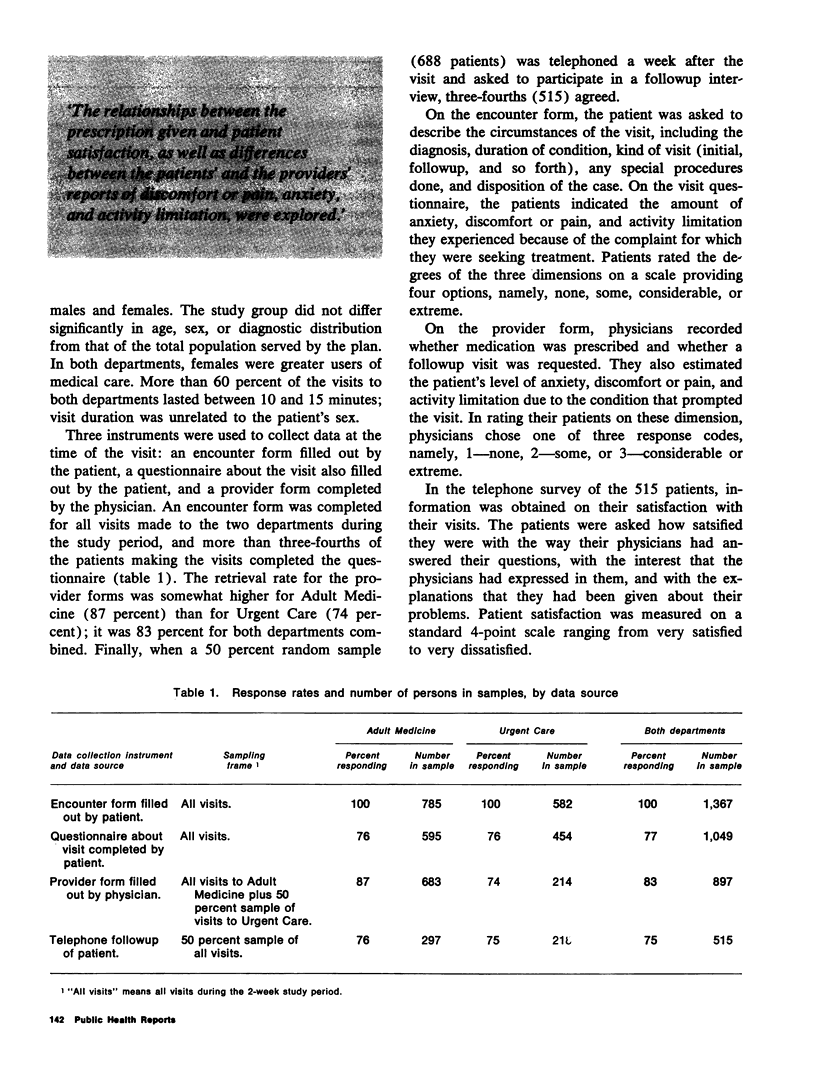
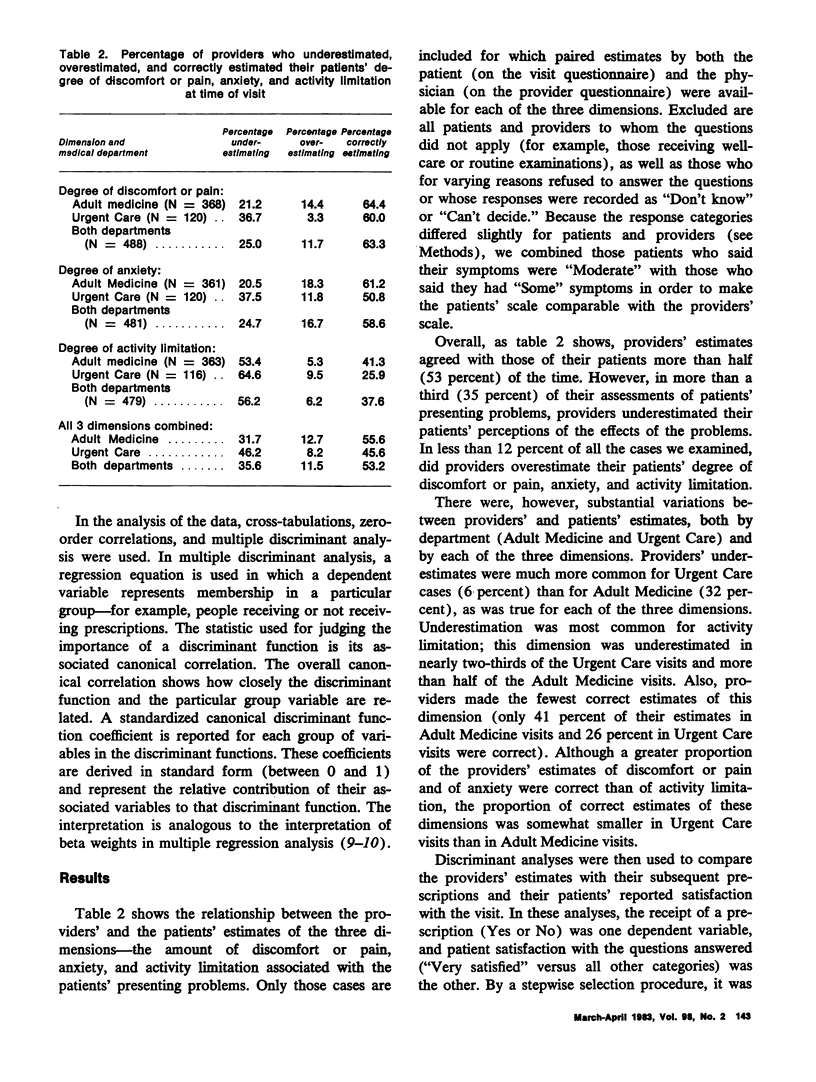
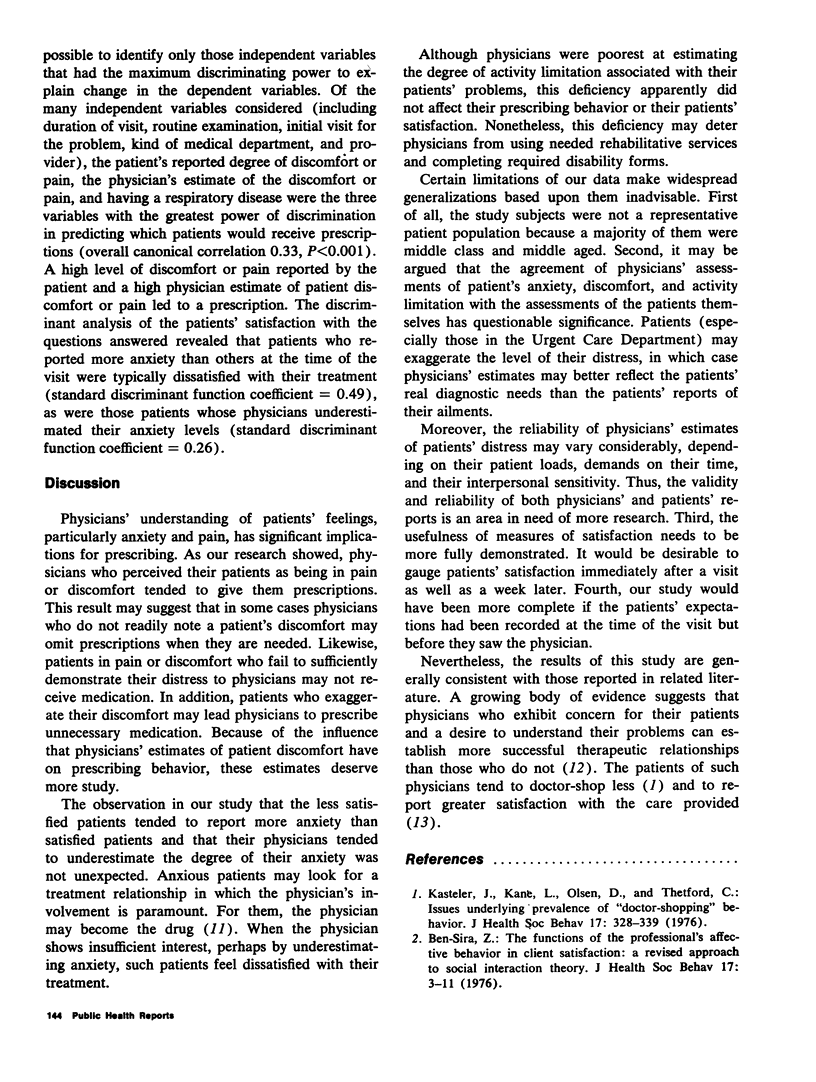
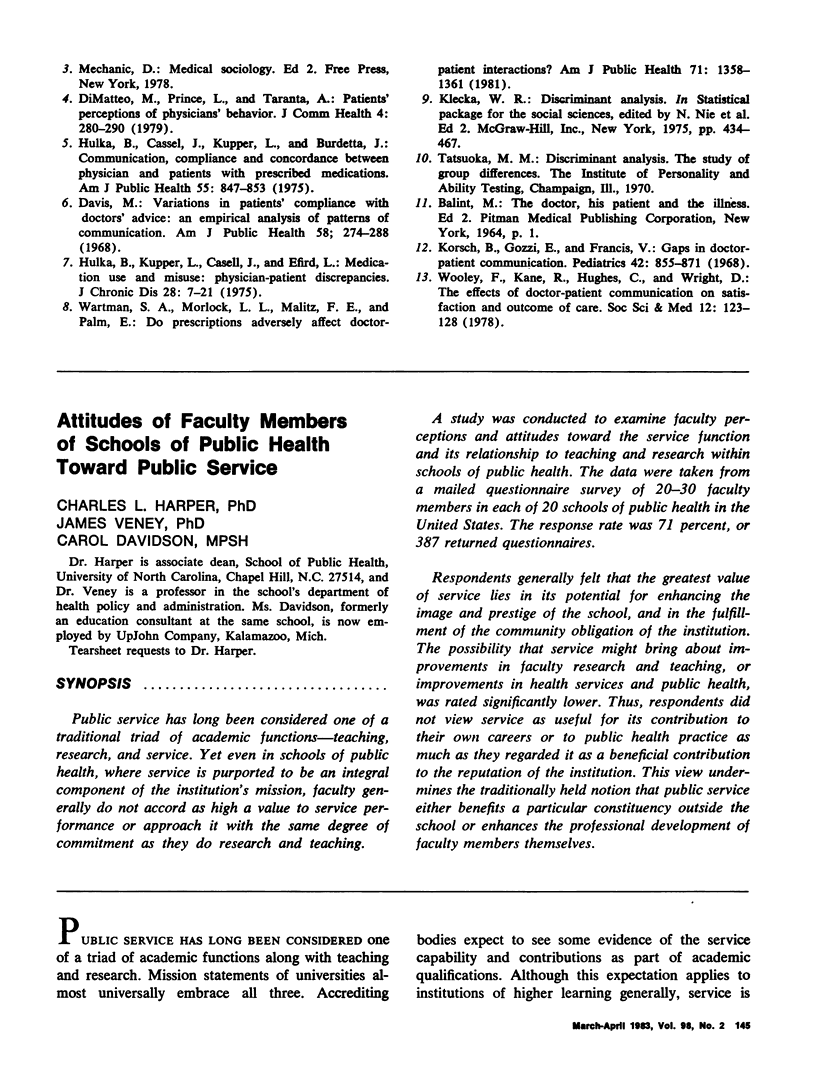
Selected References
These references are in PubMed. This may not be the complete list of references from this article.
- Ben-Sira Z. The function of the professional's affective behavior in client satisfaction: a revised approach to social interaction theory. J Health Soc Behav. 1976 Mar;17(1):3–11. [PubMed] [Google Scholar]
- Davis M. S. Variations in patients' compliance with doctors' advice: an empirical analysis of patterns o communication. Am J Public Health Nations Health. 1968 Feb;58(2):274–288. doi: 10.2105/ajph.58.2.274. [DOI] [PMC free article] [PubMed] [Google Scholar]
- DiMatteo M. R., Prince L. M., Taranta A. Patients' percentions of physicians' behavior: determinants of patient commitment to the therapeutic relationship. J Community Health. 1979 Summer;4(4):280–290. doi: 10.1007/BF01319022. [DOI] [PubMed] [Google Scholar]
- Hulka B. S., Kupper L. L., Cassel J. C., Efird R. L. Medication use and misuse: physician-patient discrepancies. J Chronic Dis. 1975 Jan;28(1):7–21. doi: 10.1016/0021-9681(75)90045-4. [DOI] [PubMed] [Google Scholar]
- Kasteler J., Kane R. L., Olsen D. M., Thetford C. Issues underlying prevalence of "doctor-shopping" behavior. J Health Soc Behav. 1976 Dec;17(4):329–339. [PubMed] [Google Scholar]
- Korsch B. M., Gozzi E. K., Francis V. Gaps in doctor-patient communication. 1. Doctor-patient interaction and patient satisfaction. Pediatrics. 1968 Nov;42(5):855–871. [PubMed] [Google Scholar]
- Wartman S. A., Morlock L. L., Malitz F. E., Palm E. Do prescriptions adversely affect doctor-patient interactions? Am J Public Health. 1981 Dec;71(12):1358–1361. doi: 10.2105/ajph.71.12.1358. [DOI] [PMC free article] [PubMed] [Google Scholar]
- Woolley F. R., Kane R. L., Hughes C. C., Wright D. D. The effects of doctor--patient communication on satisfaction and outcome of care. Soc Sci Med. 1978 Mar;12(2A):123–128. [PubMed] [Google Scholar]


